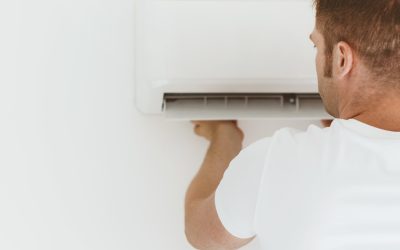The heat exchanger is a critical component of any home heating system, yet it often goes unnoticed until problems occur. This essential part not only provides efficient heating but also plays a key role in keeping your household safe. Regular inspections and proper maintenance are crucial to avoid potential risks and maintain peak performance.
What is a Furnace Heat Exchanger
At its core, the heat exchanger comprises a series of tubes or coils designed to circulate within the furnace airflow, heating the air. Its primary function is to transfer heat from the combustion gases created by burning fuel to the air distributed throughout your home. This process is essential, as it enables the furnace to provide warmth while preventing harmful combustion gases from entering your indoor air.
How Do Furnace Heat Exchangers Work
The operation of furnace heat exchangers begins when the furnace burner ignites the fuel source, which generates hot combustion gases. These gases flow through the heat exchanger, rapidly heating its metal walls. As the furnace blower pushes air over these hot surfaces, heat is transferred from the exchanger to the air. This warmed air is then circulated throughout your home, providing the desired comfort level.
Signs of a Faulty Heat Exchanger
Understanding the signs of a compromised heat exchanger can prevent costly repairs and health risks. Here are some indicators:
- Strange Smells: A cracked heat exchanger can emit a formaldehyde-like smell, which is a telltale sign of leakage.
- Soot Inside the Furnace: This often indicates incomplete combustion, which can be due to a damaged heat exchanger.
- Water on the Floor: This may signal condensation issues, often related to heat exchanger problems.
- Physical Damage: Any visible cracks or holes when inspecting the unit are immediate red flags.
The Importance of Regular Maintenance
Regular maintenance is key to ensuring the longevity and efficiency of your heating system. Here is why consistent check-ups are crucial:
- Safety: Cracks in the heat exchanger can leak carbon monoxide, a deadly gas, into your home. Routine inspections help detect such issues early.
- Efficiency: A well-maintained heat exchanger operates more efficiently, reducing energy consumption and lowering utility bills.
- Durability: Regular maintenance extends the life of the heat exchanger by preventing excessive wear and tear.
Maintenance Tips
To keep your heat exchanger in top condition, consider the following tips:
- Regular Inspections: Have a professional inspect the furnace annually before the cold season starts.
- Change Filters Regularly: Dirty filters restrict airflow, causing the furnace to work harder and possibly overheat the heat exchanger.
- Keep the Area Clean: Ensure the furnace area is free from debris and dust that can enter the system and reduce its efficiency.
Understanding Your Furnace Heat Exchanger
The heat exchanger is a pivotal component of your heating system, playing a direct role in the comfort and safety of your home. Understanding its function and signs of potential issues can help you maintain an efficient and safe heating system. The key to the longevity and peak performance of your furnace lies in regular maintenance and prompt attention to any irregularities. By keeping these insights in mind, you can ensure that your heating system remains a reliable source of warmth for years to come. For more detailed information, visit furnace heat exchangers.


